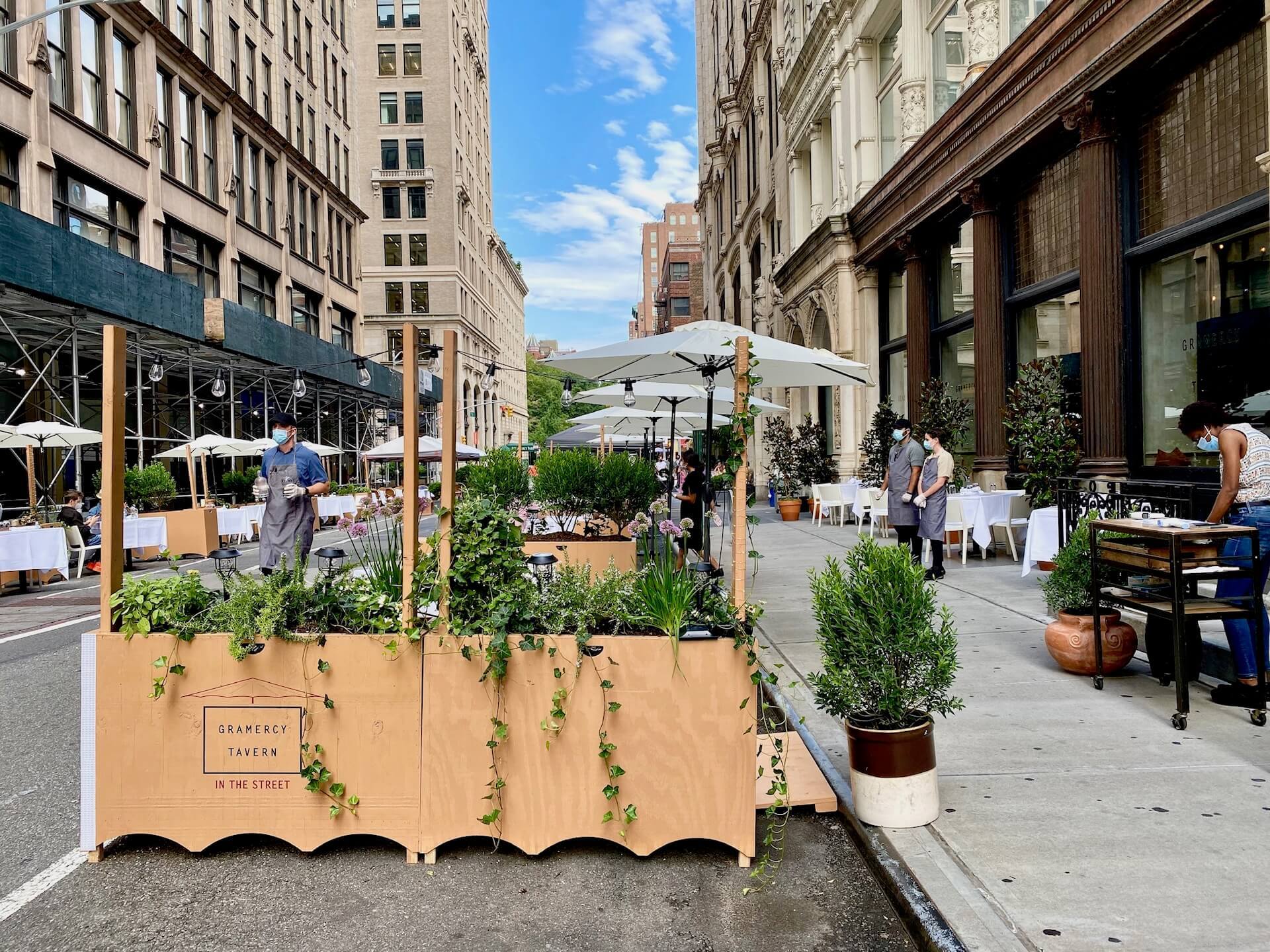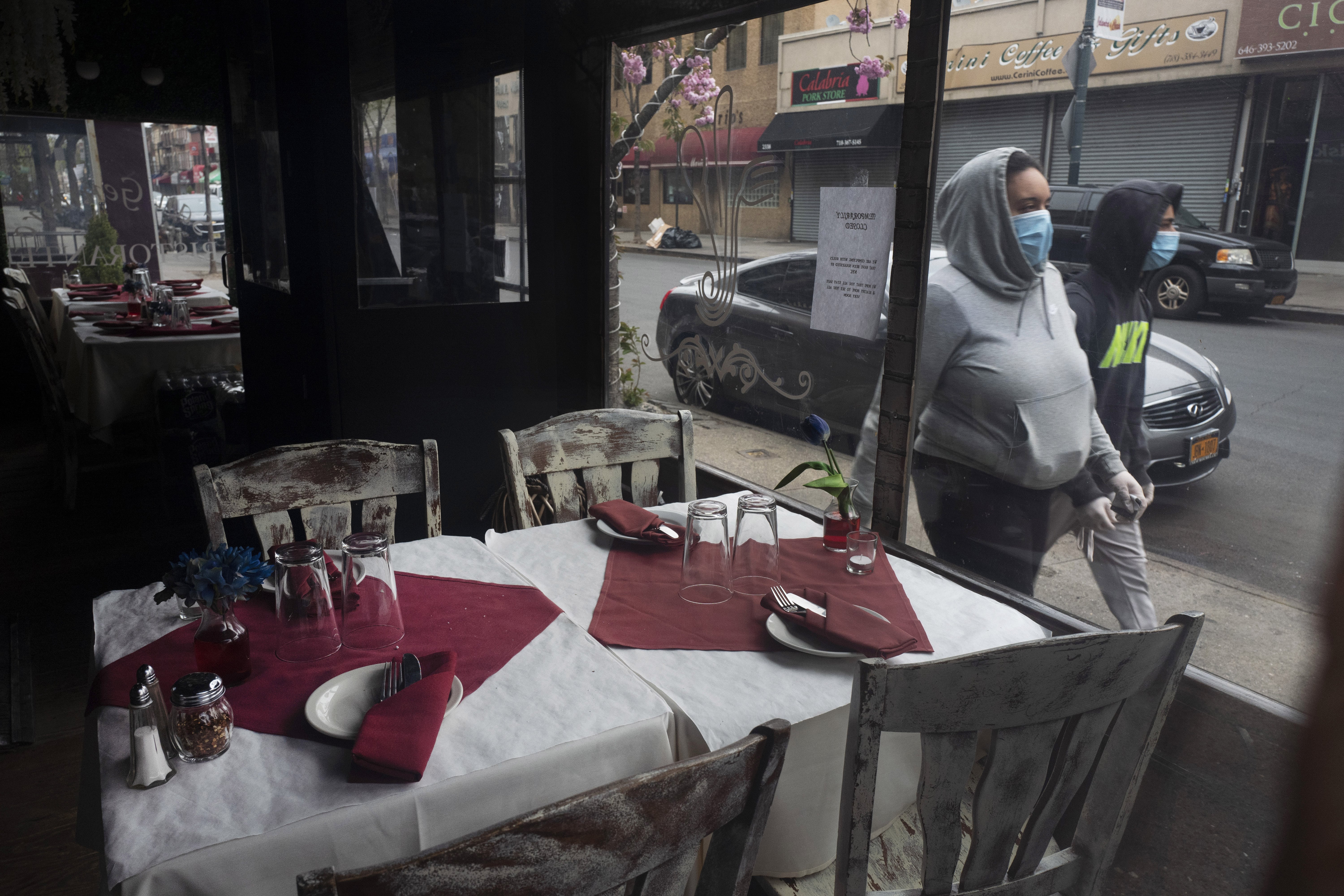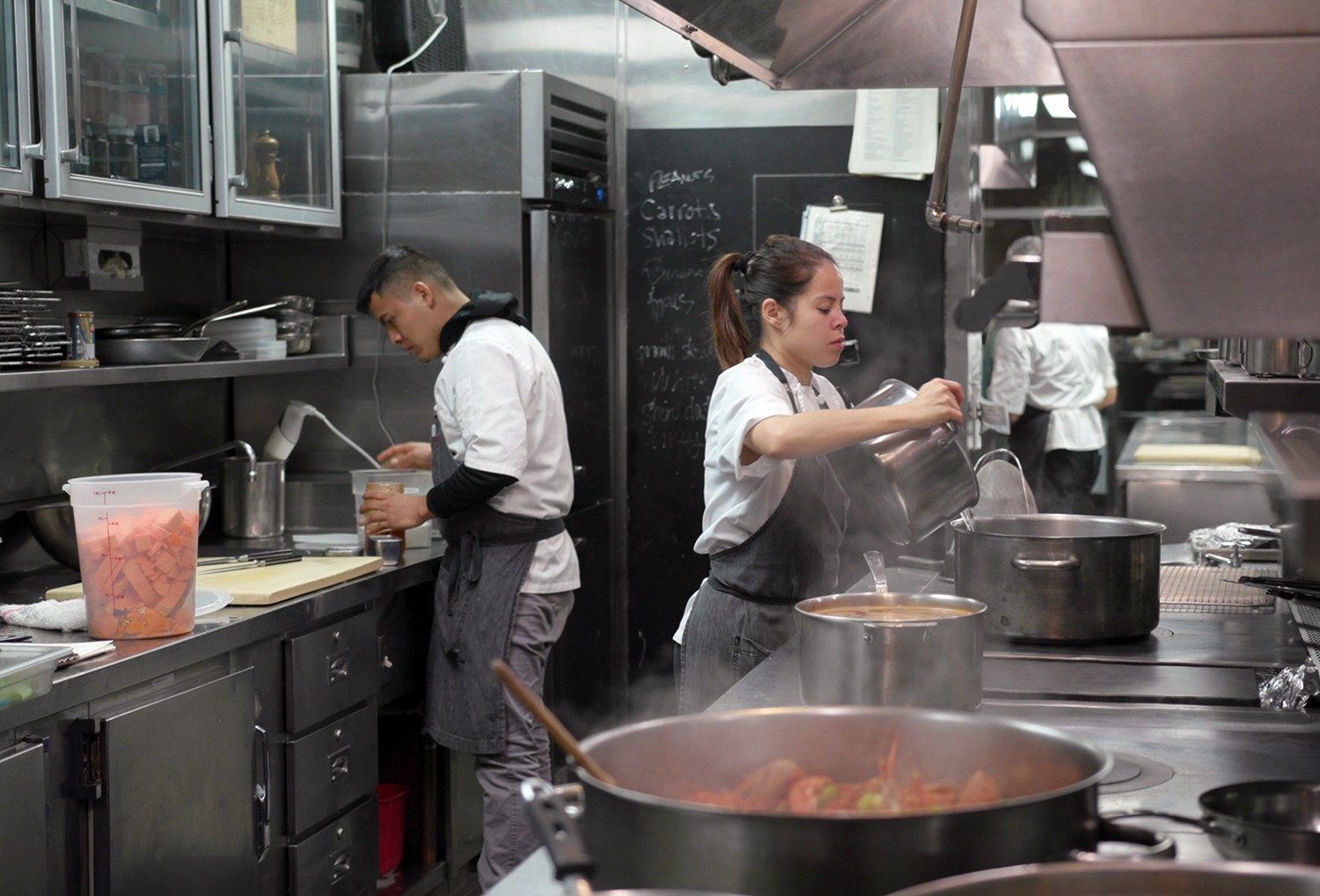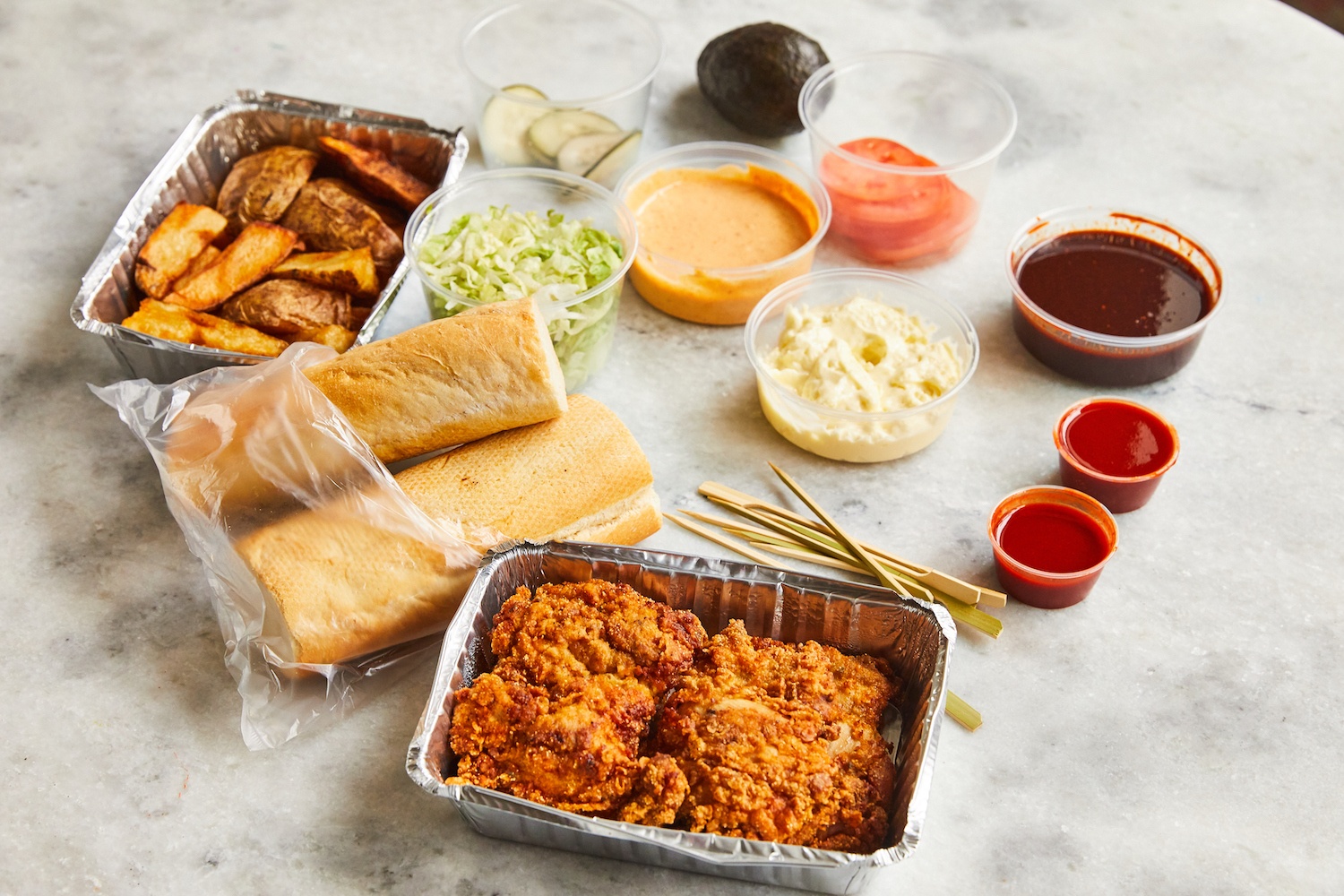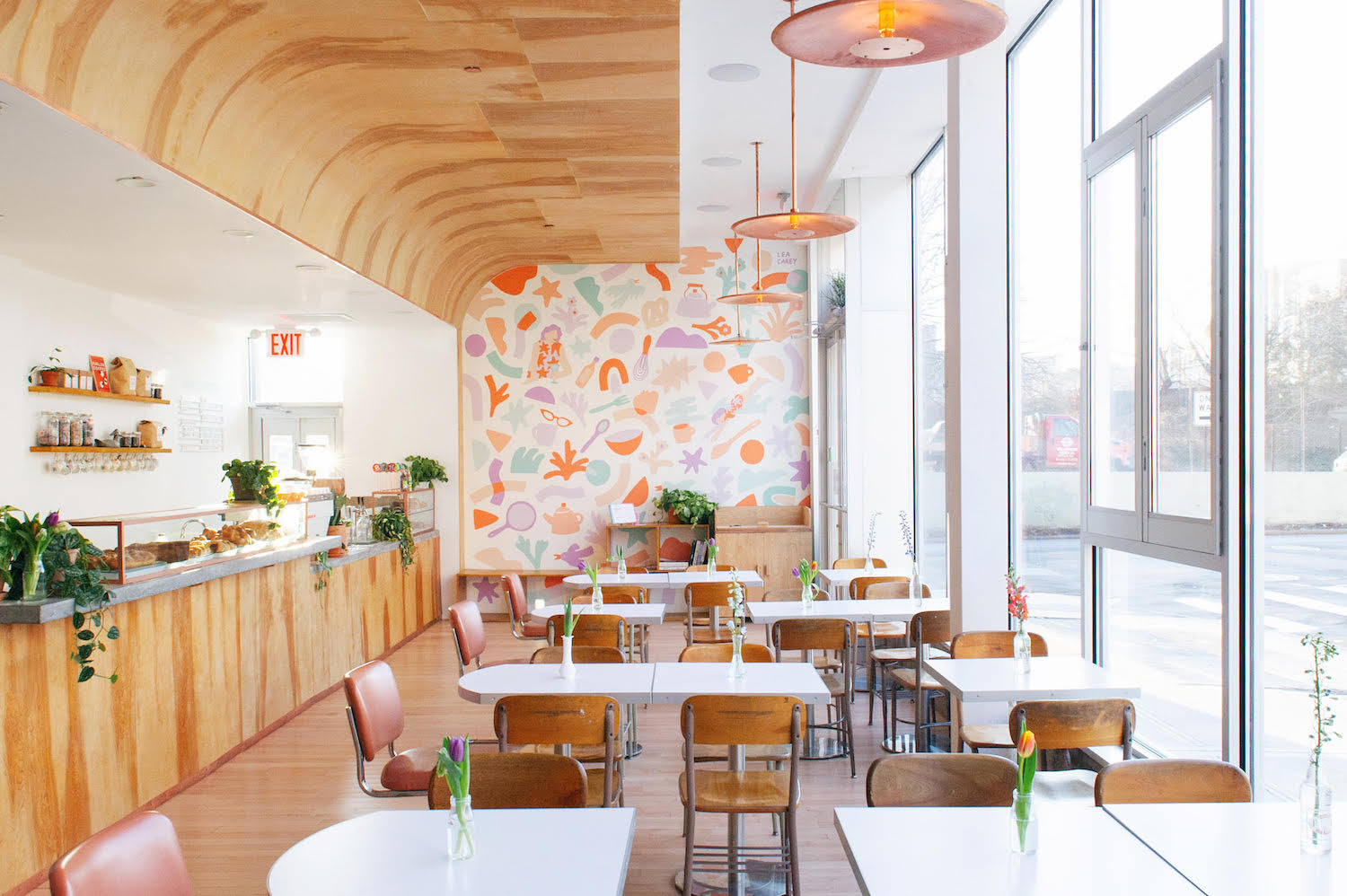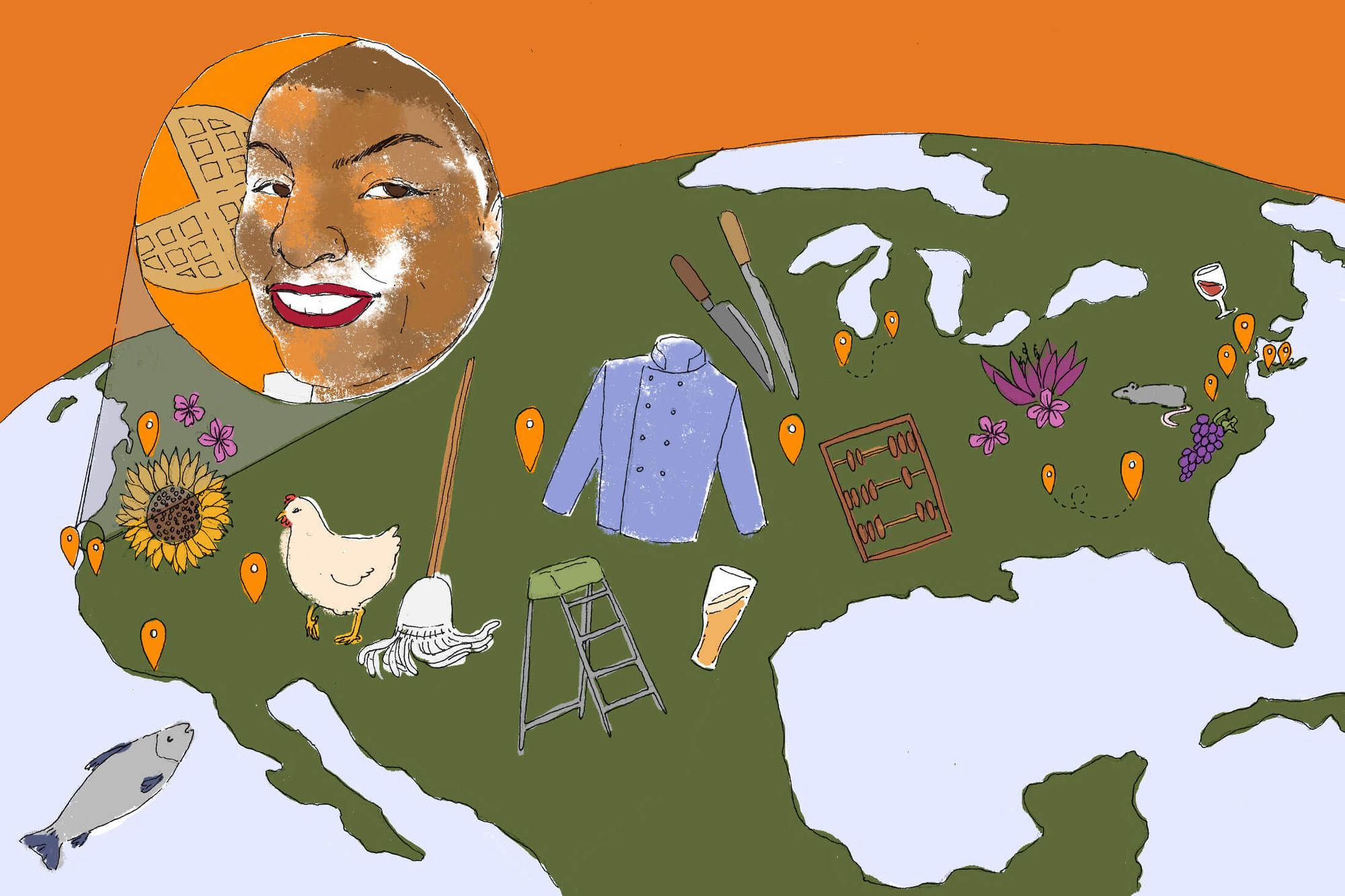
Jaye Elizabeth Elijah
Eight million Americans are employed in restaurant-adjacent industries, from linen washers to accountants to exterminators. How are they coping now?
American restaurants have lost more jobs than any other sector during the pandemic: There are three million fewer restaurant jobs now than in February, when 15.6 million people went to work where you went to eat, according to the National Restaurant Association. The trade group reports that 100,000 restaurants have closed in the first six months of Covid-19—and the Independent Restaurant Coalition predicts that 85 percent of independent restaurants could be gone by the end of the year.
But no restaurant is an island: They are the central component of a wider business ecosystem, but they are hardly alone. When restaurants suffer, their invisible suppliers are often the first casualties, from valet parking companies to accountants to florists.
Chef Tanya Holland is the 55-year-old owner of Brown Sugar Kitchen in Oakland, California, a local soul food staple famous for its chicken and waffles. She had expanded her 12-year-old business into a new, roomier location about a year before the pandemic hit.
“We were just hitting our stride,” said Holland. “So although it wasn’t perfect, it seemed like we were going to get some breathing room soon. And then this happened.”
“It’s a Catch-22, because we actually need PR right now. We need them to help us drum up additional business. But it’s not a necessary expense.”
She shifted to take-out only and started to trim her costs. Since there was no longer an indoor space for customers to visit, she no longer needed welcoming décor. “Poor florists,” said Holland, of a common early casualty. “Oh my god. That’s like the first thing to go.”
Before the pandemic, Holland’s florist installed arrangements every week— ironically, a dried-flower arrangement right before the pandemic. “Even though I love fresh flowers, it was a cost we had to do without for a little bit,” Holland said. Eliminating flowers saved her $600 per month.
Holland cut her two-to-four-person night cleaning crew from five nights a week to two. She shrunk her menu so she could shrink the size of her supply orders. And she no longer needs anyone to clean her beer draughts because she isn’t selling draught beer. In fact, she stopped ordering alcohol altogether, even though it used to bring in her biggest profit margins, because she’s yet to use up her large inventory of wine and spirits. And she’s certainly not hiring a public relations firm.
[Subscribe to our 2x-weekly newsletter and never miss a story.]
“It’s a Catch-22, because we actually need PR right now,” she said. “We need them to help us drum up additional business. But it’s not a necessary expense.” At least no one lost a job because of her decision: The last time Holland used a public relations firm was in 2012, when she spent $3,000 per month for an independent publicist, in advance her last cookbook being published.
“Restaurants have landlords, but the landlords have landlords: their banks.”
Holland let several upper management employees go, though she had decided to restructure her partnerships and staff before it became a necessity. “It’s always hard to break those ties under normal circumstances,” she said, “So the pandemic actually allowed me to do that and get clarity.”
Her sales are down about 65 percent, but she’s able to make do for now, thanks to a landlord willing to accept a percentage of her sales, currently from take-out only, instead of a traditional rent.
Not every landlord can be that flexible. “Restaurants have landlords, but the landlords have landlords: their banks,” said Taryn Brandes, a real estate agent in New York City whose firm focuses on the hospitality industry. “And so not every landlord has the ability to work with their tenants if the banks aren’t willing to work with the landlords.”
For all the cutbacks and accommodations, though, Holland’s big concern is when she’ll be allowed to resume indoor dining, get business closer to normal, and add back some jobs. “I have this big space that is built for dine-in and I have no idea when we’ll be able to do that again,” she said.
But she’s cautious about the future, which spells more trouble for her suppliers: Although Alameda County now meets California’s risk-assessment guidelines, it doesn’t yet permit indoor dining, which is fine with Holland; even when it does, she’s in no hurry to ramp back up. And re-hiring staff is her priority, not restoring non-essential services.
“I would love to re-hire the florist,” she said, “but it’s not a priority expense.”
The Counter found people across the country whose work has been scaled back or eliminated completely because restaurateurs like Holland just can’t foot the bill anymore, people whose stories don’t usually make it into coverage of the continuing restaurant nightmare. But behind your neighborhood joint is an array of people—about eight million, according to the Economic Policy Institute— whose jobs and livelihood depend on restaurants. Here’s a look at the scope of the casualties.
—
Tom Cannon, 60
Beer Draught Cleaner, Illinois & Indiana
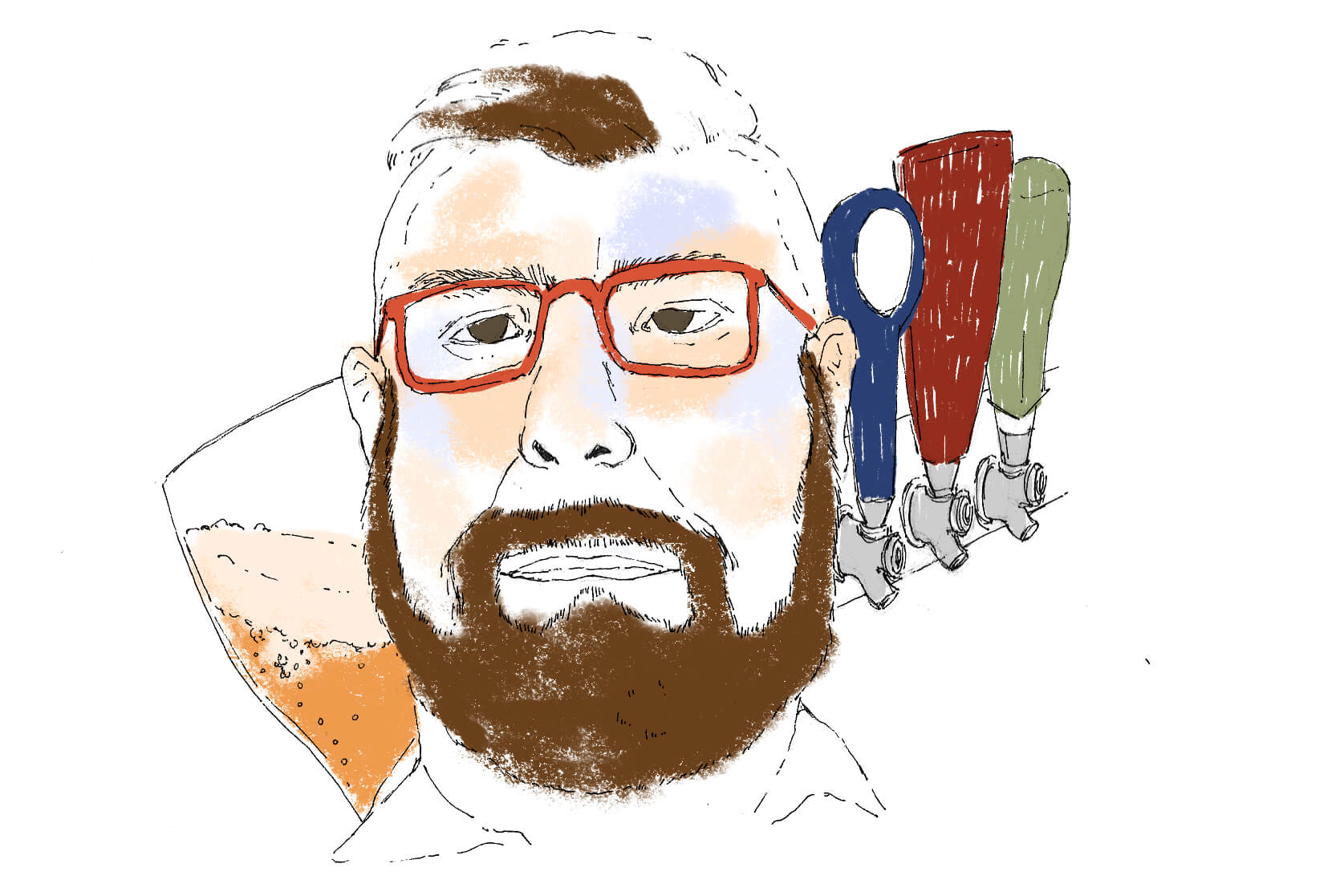
Jaye Elizabeth Elijah
For 29 years, Tom Cannon has made sure that tap beer is cold and crisp, not warm and foamy.
“You walk in and it’s a Friday night at 7 o’clock and they are beside themselves,” said Cannon, of an establishment that needs its beer lines cleaned. “And by 8:30 their beer is pouring and they couldn’t be happier.”
Draught cleaning isn’t the most glamorous work, but it’s consistent—or it used to be. Most states require cleanings every two weeks, and in normal times My Beer Guy, the business the 60-year-old Cannon runs with his wife, had about 15 employees, servicing over 1,000 restaurants and bars around Chicago and northeast Indiana.
But when the pandemic hit, “everything came to a screeching halt,” said Cannon. For two months they had little work; most employees collected unemployment. Cannon and his wife didn’t take paychecks from mid-March until the end of June, when businesses reopened with outdoor dining.
“We’re believers in paying it forward. Good things come to you at some point if you do good by somebody else.”
“It got a little tight, but we were okay,” said Cannon. “I wanted to make sure our employees were okay, too.” My Beer Guy borrowed a line of credit to be able to pay their staff while the work slowed down.
Normally, My Beer Guy brings in about $1.5 million annually, but Cannon thinks they’ll be down this year by 35 percent. About 80 percent of his clients are back open and need their lines cleaned, but many accounts take more than 90 days to pay, making it difficult for Cannon to operate the business.
For some long-time clients, Cannon traded his services for meals.
“I said, you know, just give me a basket of wings,” said Cannon. “We’re believers in paying it forward. Good things come to you at some point if you do good by somebody else.”
But other, smaller draught cleaners are not faring as well.
“I guess if it came down to it I’d get a job at Target or something.”
In Philadelphia, Chet Krukowski, the 58-year-old owner of The Beer Plumber, lost nearly all of his 40 clients. Before the pandemic, The Beer Plumber grossed around $120,000 a year. Now, Krukowski said, he’s lucky if he brings in $150 a week, and several clients are running four or five months behind on their payments.
Krukowski has kept servicing a few restaurants he’s worked with for many years, hoping for a lump-sum check down the line.
He now collects unemployment benefits, and is grateful that his wife’s job— human resources at a rehab hospital—has remained steady.
“I’m too old to do anything else,” said Krukowski who started his business 17 years ago. “I guess if it came down to it I’d get a job at Target or something.”
Emily Thompson, 46
Florist, New York City
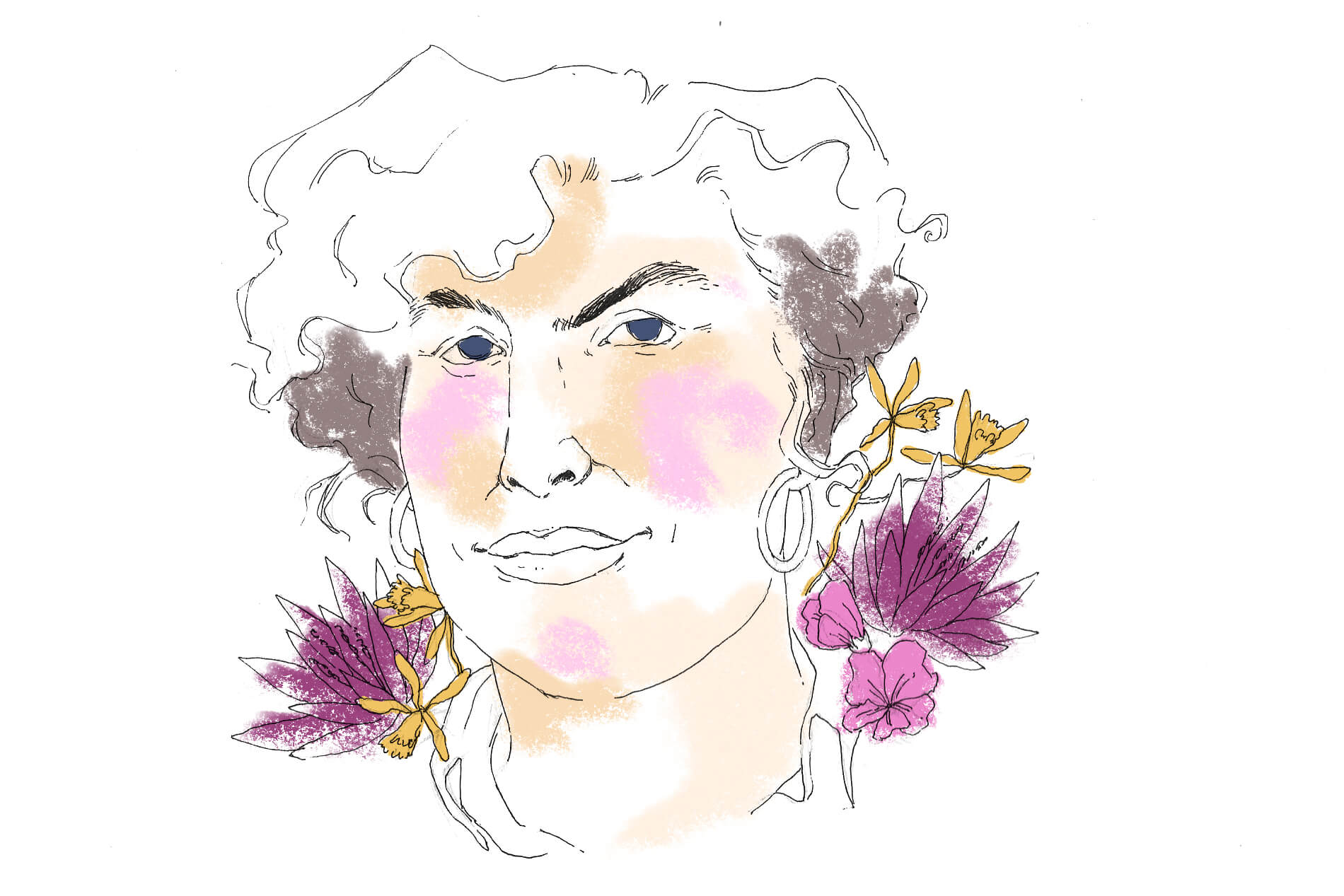
Jaye Elizabeth Elijah
Press play to listen to the audio quote. Read the full transcript here.
Before the pandemic, Emily Thompson Flowers had a team of 15 that installed floral arrangements in New York City restaurants, museums, and event spaces. Thompson, a 46-year-old formally-trained artist who found floral design by way of sculpture, described her team’s work as a complicated dance—living on the city’s loading docks, sneaking into restaurants at the crack of dawn wearing headlamps to install arrangements, sourcing from local farms and foragers, rushing in to adjust an arrangement, minutes before service began, because something fell or dried too quickly.
Sometimes flowers serve a practical purpose, dividing or enclosing a space, hiding a flaw, or connecting two parts of a room, said Thompson, who started her business in 2009. “We’re the ones that make the space tolerable,” she said. “We reflect the values of the restaurants in a visual sense.”
But flowers are a luxury. When the pandemic hit, Emily Thompson Flowers lost all their accounts. “And whether they return is, I think, in every single case, really in question,” said Thompson. With no work, she had to furlough her 15 employees.
Thompson’s retail flower shop is closed indefinitely, but she’s been able to work out a deal with the landlord for her studio space.
“I miss my team and my flowers,” Thompson said. In recent weeks, she’s had some small projects with longstanding clients and has rehired four employees with funds from a PPP loan. Her retail flower shop is closed indefinitely, but she’s been able to work out a deal with the landlord for her studio space. Thompson now spends her days strategizing how to move forward with her business, but said it’s unclear when regular restaurant work will come back. “I’m not holding my breath.”
Across the country, in Berkeley, California, business has also halted for Max Gill, the florist at Alice Water’s Chez Panisse. Gill singlehandedly runs a small floral design company, and, while Chez Panisse is his only restaurant client, it’s a large account. With the restaurant closed and events cancelled, Gill has lost most of his business. But there’s a silver lining to the timing of the pandemic—it’s given him time to take care of his aging mother. Still, the 50-year-old florist is living off savings, with no clear idea of what he’ll do if the business doesn’t recover.
“I’m fortunate enough and grateful to say that I’ll be fine this year,” Gill said. “I can’t do two years, though. I didn’t save that well.”
Joel McAllister, 46
Linen, Seattle, Washington
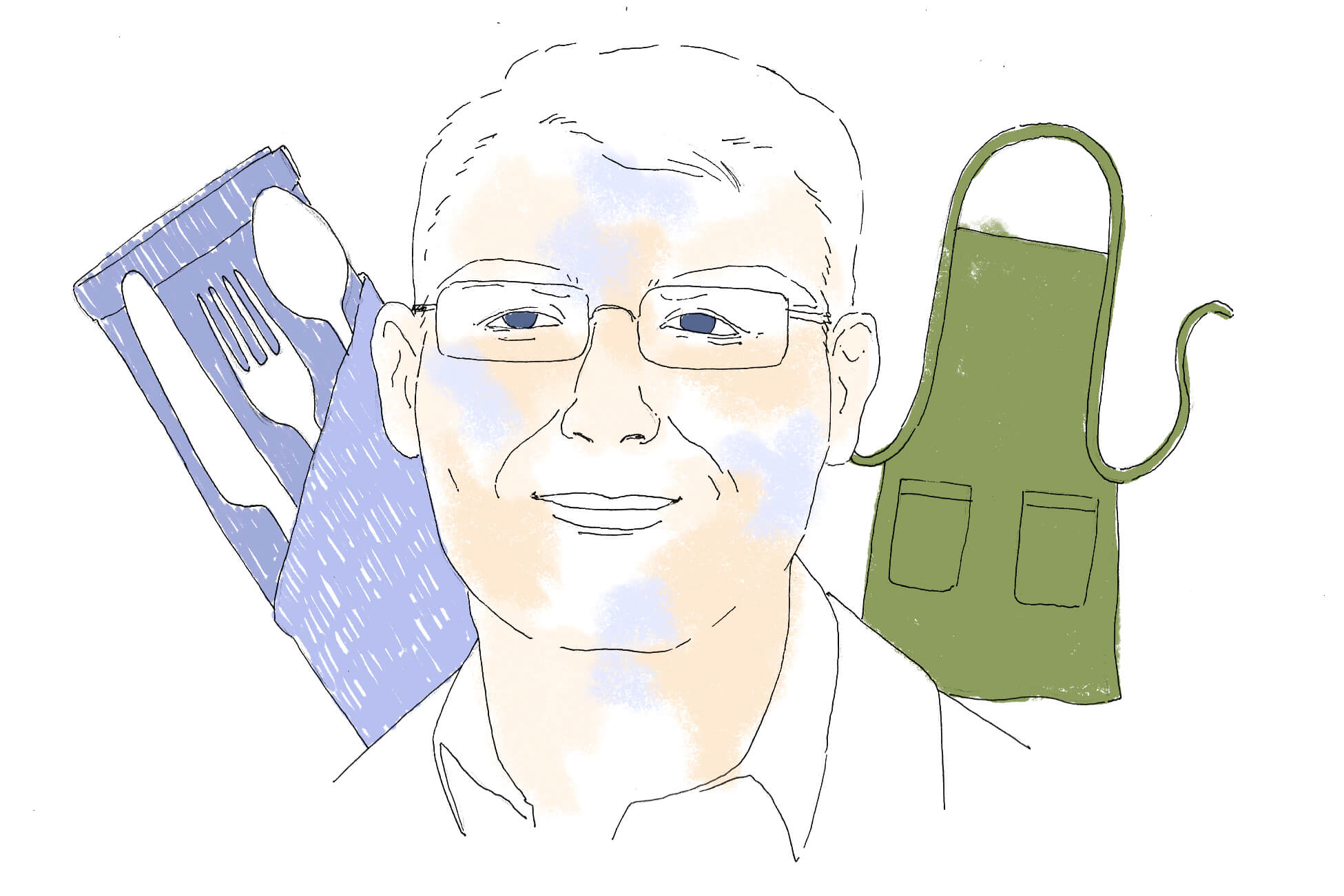
Jaye Elizabeth Elijah
Press play to listen to the audio quote. Read the full transcript here.
There are no cruise ships docked in Seattle’s port, and no happy hours or business meetings over lunch at the city’s restaurants. Downtown Seattle’s biggest employers, like Amazon, have their employees working from home at least until 2021, which means there’s very little fine dining—and in turn, less need for linen services.
“People just aren’t using napkins,” said Joel McAllister, the 46-year-old general manager of Tomlinson Linen Service, an independent restaurant supply company whose success depends on Seattle’s once–thriving restaurant industry.
“Seattle is a ghost town right now,” said McAllister.
Tomlinson’s product line includes essential items like chef coats, aprons, mops, and bar towels, but in addition to cutbacks on those, demand has decreased for more expensive, more profitable items like floor mats. “Restaurants are obviously looking to cut their costs as much as they can,” said McAllister. “But it really impacts us because sometimes those are the more profitable items that we do.”
“Our costs have tripled and sometimes quadrupled since March.”
Other products, like gloves, are in such high demand that McAllister struggles to fill orders. Tomlinson’s supplier is often out of stock, and when gloves are available those suppliers inflate the price, making them harder for restaurants to afford at a time when they’re more important than ever. “Our costs have tripled and sometimes quadrupled since March,” he said.
The dip in sales has devastated Tomlinson. The company had around 160 employees in February. Today, after large-scale lay-offs, it’s closer to 50. After 15 years of continuous growth, and a projected 10 percent increase this year over 2019 revenues of $13 million, Tomlinson said that revenues hover at around 35 percent of where they should be.
“And it’s just plateaued. It’s leveled off. It’s not going up anymore. It’s just that’s where we’re at. Until things change,” McAllister said. “It’s just a stressful situation. You grow a business to a certain level and then it’s just gone overnight.”
Guy Alessandro, 59
Accountant, New York City

Jaye Elizabeth Elijah
Specialty accounting firms have one major advantage, which is that they have niche expertise. The disadvantage: If your niche industry crumbles, you’re out of luck.
“All your eggs are in one basket,” said Guy Alessandro, whose firm, Alessandro & Associates, works exclusively with restaurants. Even when the economy struggled and higher-end restaurants suffered, less expensive places would see their business improve. For Alessandro, growth was almost guaranteed. Last year the firm’s earnings were the highest in 30 years of doing business.
“Successful restaurateurs expand,” said Alessandro. “So it’s a beautiful thing that you don’t have to do anything. You just get a phone call: ‘I’m opening a new location.’ So you have built-in business increase. And that offsets the people that fail.”
“They want to know what other people are doing, how they are getting by. Should I open for take-out and delivery only? What are the pluses and minuses?”
Before the pandemic, Alessandro would advise businesses on how to reassess their payroll or reduce their rent. Once the pandemic hit, Alessandro’s firm quickly became experts in PPP loans, even as his clients found themselves unable to pay the firm’s monthly retainers.
“People were constantly like, ‘What are other people doing?’” said Alessandro. “They want to know what other people are doing, how they are getting by. Should I open for take-out and delivery only? What are the pluses and minuses?”
Alessandro has lost more than 50 percent of his business, and it’s unclear what will become of the rest of his clients. “Our business is not half of what it was,” he said. “We are back to where we were 20 years ago.”
The 59-year-old Alessandro was gearing up for retirement, but those plans are on hold, because they were predicated on the value of his business. “It’s not going to happen now,” said Alessandro. “Not going to happen for a while.”
John Kostelac, 70
Grease Recycler, Saint Louis area
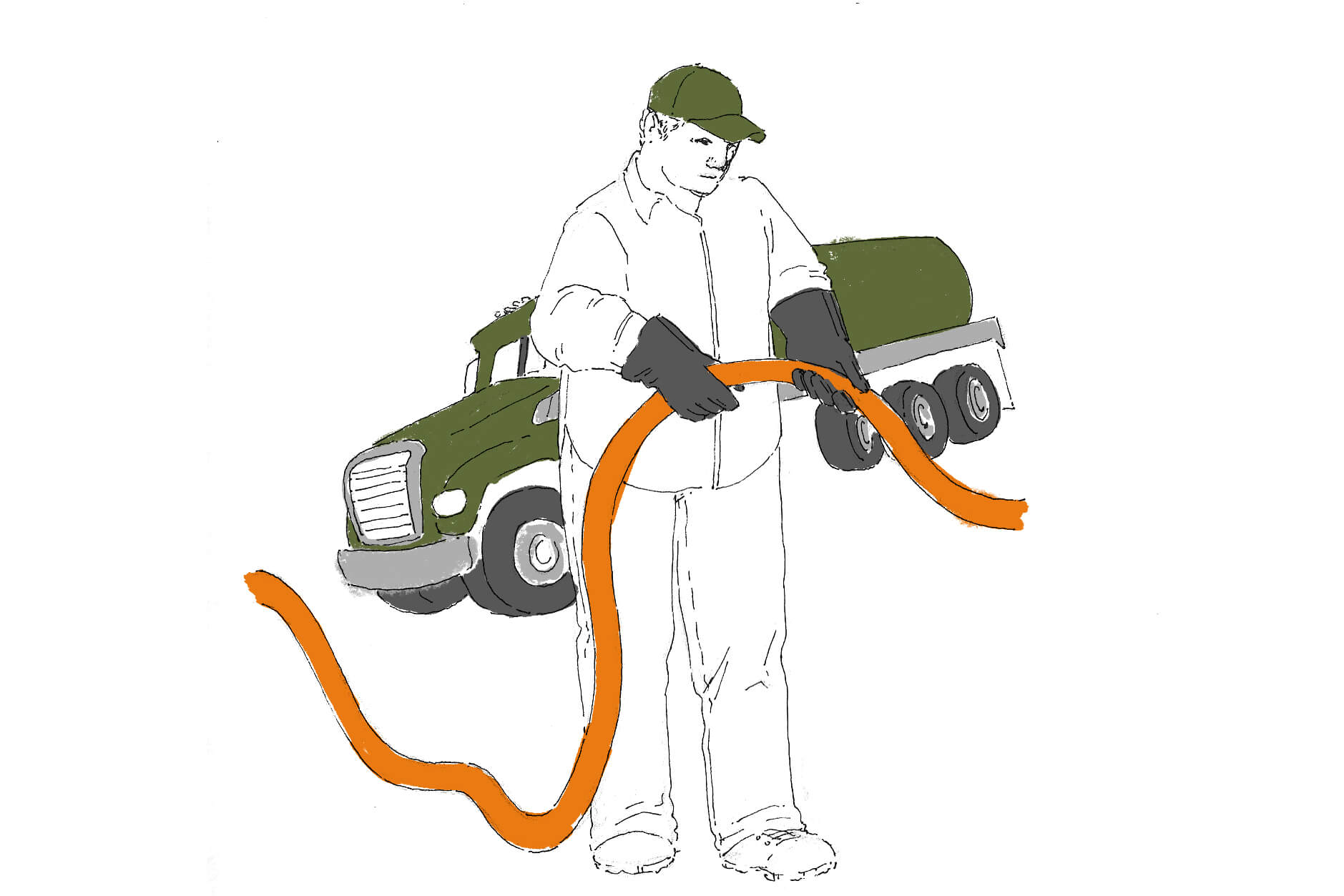
Jaye Elizabeth Elijah
Press play to listen to the audio quote. Read the full transcript here.
Kostelac Grease has collected grease in the Saint Louis area for the past 90 years.
“It’s really a hidden industry,” said John Kostelac, whose grandfather, a hog farmer, started the business by picking up restaurant food scraps to feed his hogs and then selling the leftover grease on the commodity market as a raw material. Selling grease turned out to be more profitable than running a hog farm, and the family’s been in the rendering industry ever since.
Before the pandemic, Kostelac Grease collected grease from about 4,000 businesses, mostly restaurants, in the Saint Louis area. They gave each restaurant a 300-gallon tank into which they dump their kitchen grease, so that Kostelac’s drivers can pull the grease into their vacuum trucks and bring it back to a pit at the plant that holds 200,000 pounds.
“I know it’s dirty and people can’t understand how we can stand the smell of it,” Kostelac said. “But it’s really not that bad.”
“When they have no business, their grease can last longer. And then that’s where volume went down.”
The heated grease, dubbed Yellow Grease, is sold primarily for animal feed, but it also shows up in synthetic rubber, biodiesel, or soap. During the height of the pandemic, the business got hit from two sides: The price of Yellow Grease fell and the volume Kostelac picked up decreased.
“Restaurants change their fryers after so many pounds of fish or chicken or French fries went through the fryer,” Kostelac said. “So when they have no business, their grease can last longer. And then that’s where volume went down.” At first it was off by a third—and while it’s picked up a bit since, the company is still off its seasonal volume by about 80 or 85 percent.
And the price is still down. At the start of the year yellow grease sold for around 27 cents a pound. In March, when Covid-19 hit, it went down to 22-23 cents per pound, dropped to a low of 17.5 cents per pound, and now hovers near 20 cents.
Kostelac said a PPP loan helped cover payroll and insurance for his 20 employees for about 12 weeks. Once the loan ran out, volume started to pick up as restrictions lessened and outdoor dining took shape, so he didn’t have to furlough or lay off anyone.
“We didn’t really have to suffer too much,” said the 70-year-old Kostelac. “We were real fortunate.”
Jarod Medbery, 35
Hood Cleaners, Georgia
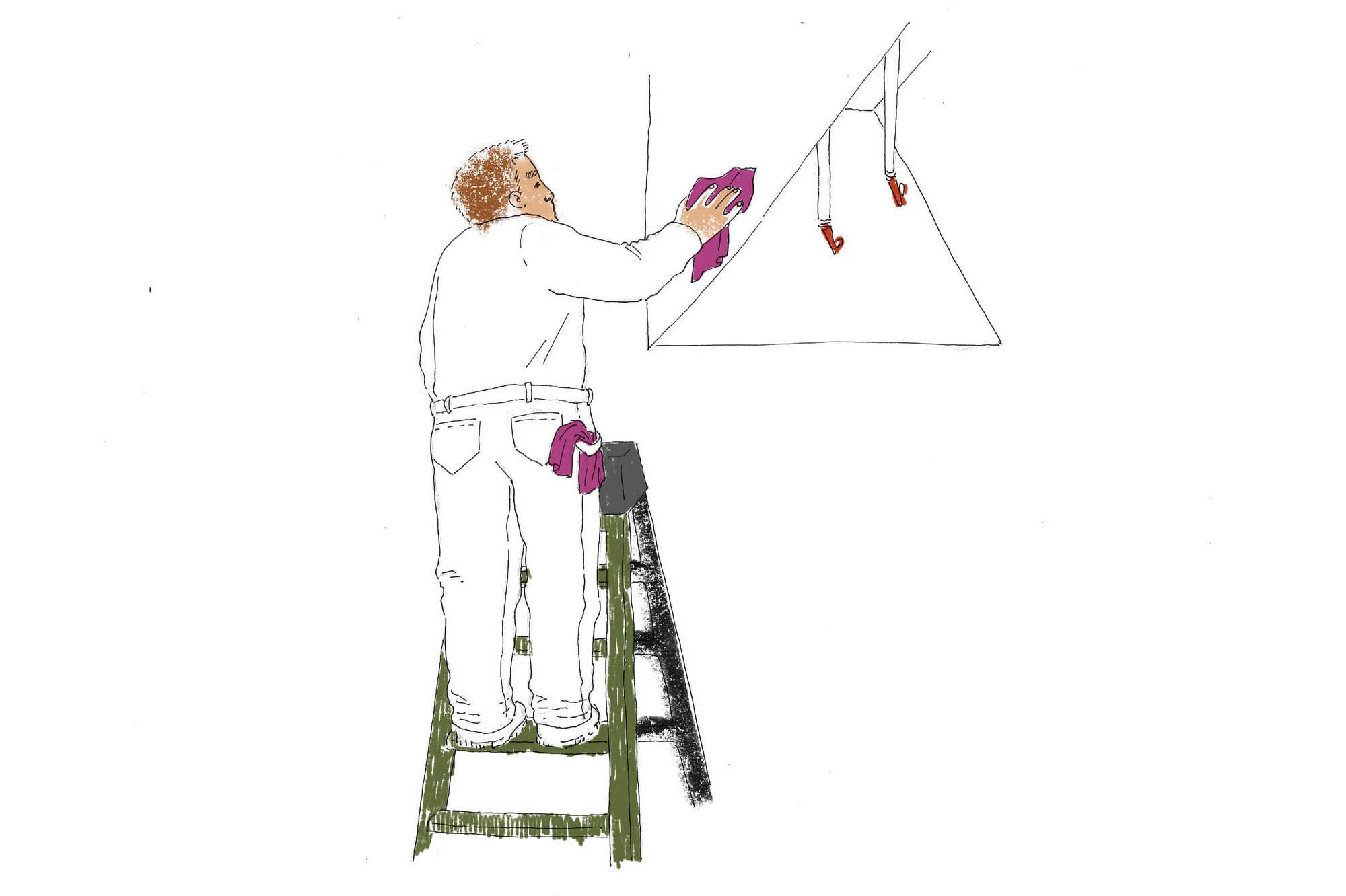
Jaye Elizabeth Elijah
Jarod Medbery likes the reliability of his jobin sales and maintenance at Georgia Vent Works, a mid-size hood cleaning company his father started almost 20 years ago. They normally service between 300 and 400 restaurants in Georgia and Alabama.
Hood cleaners work at night, removing the grease that’s built up in a commercial kitchen’s exhaust system, using pressure washers and pump sprayers that apply chemicals. “It’s a dirty job,” said Medbery. “We go up on roofs, so you can’t be scared of heights.”
In Georgia, county fire marshals dictate how often hoods should be cleaned—from every month to four times a year—and the work is stable. “Restaurants always need cleans. So we know that we’re going to have that customer base,” said Medbery. “So even with Covid, we didn’t have to shut down completely like a lot of people. And that is kind of a blessing.”
Still, Georgia Vent Works had to downsize from mid-March through May, when restaurants postponed using their services. The company furloughed half of their 10 employees, who took unemployment for two months when business was down. A PPP loan kept the rest of the employees afloat.
“We were bare bones there for a while, but slowly it’s getting a little bit better.”
“We were bare bones there for a while, but slowly it’s getting a little bit better,” said the 35-year-old Medbery, who has worked for the company for 4 years. The company currently operates at around 80 percent of their normal workload. Medbery estimates that by the end of the year their annual sales will be down by 40 to 50 percent.
At one point, they were at risk not because of restaurants but because of one of their suppliers, who couldn’t get one of the chemicals Georgia Vent Works uses: They came within two weeks of having to shut down completely.
“Covid caused problems to their supply chain and it trickled downstream to us,” Medbery said.
Georgia Vent Works’ crew in Alabama lost more business than in Georgia—they serviced a number of Pizza Hut locations, many of which closed permanently due to Covid-19.
“Georgia has been a bit more relaxed,” Medbery said. “It could have been a whole lot worse.”
Joel Grassi
Exterminator, New York City, NY
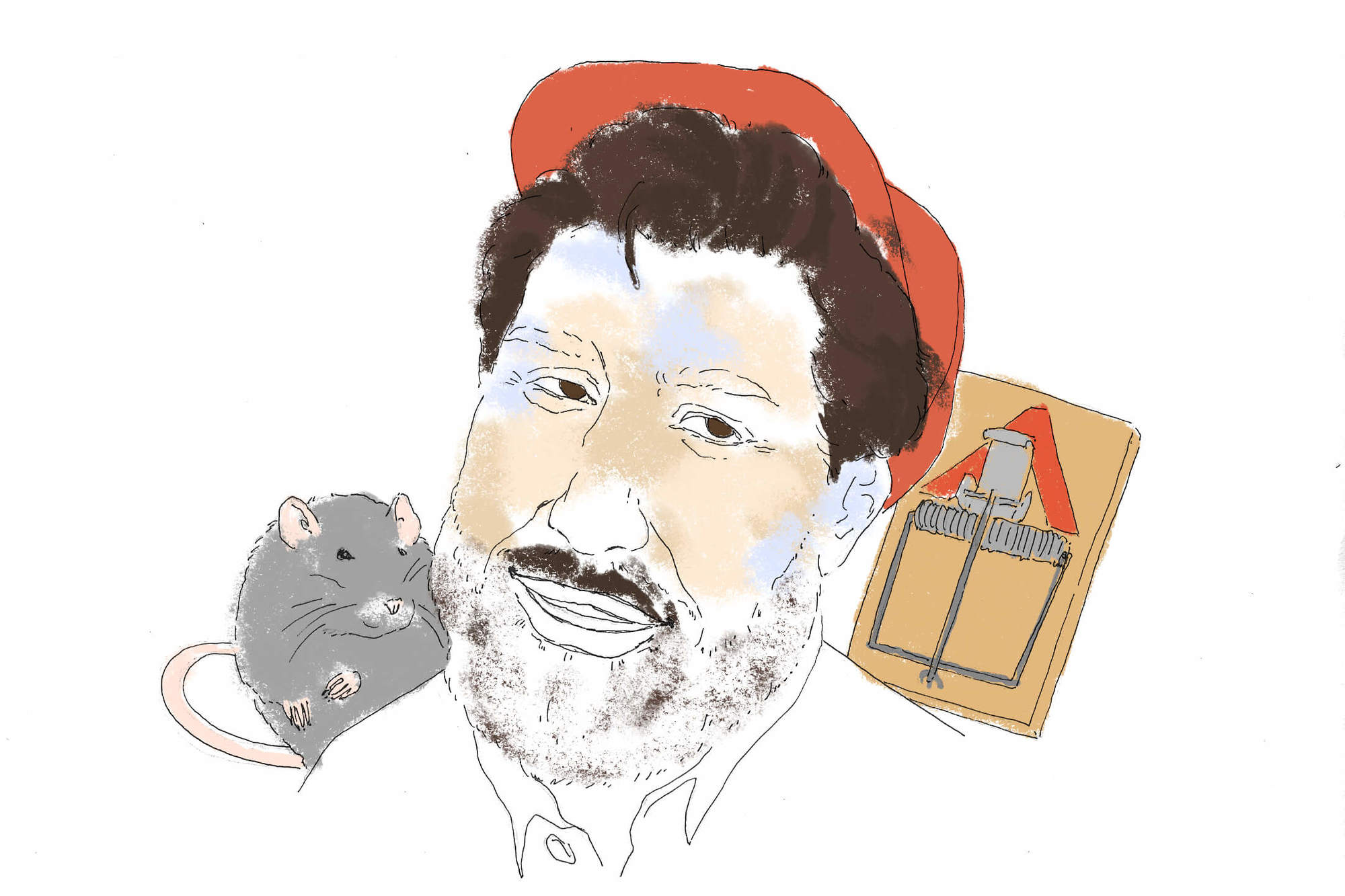
Jaye Elizabeth Elijah
Press play to listen to the audio quote. Read the full transcript here.
Joel Grassi spends his summers fighting fruit flies.
“Usually in the summer we close our eyes at night when we go to bed and we see flies flying in our eyelids,” said Grassi, co-owner of BHB Pest Elimination, a New York City extermination business.
This summer was different. “This is the first summer that any of us can remember where fly control was not the number one thing on our minds,” said Grassi. “This summer, we’ve just been fighting to stay alive.”
BHB Pest Elimination was founded in 1969, and the company has operated out of a Chelsea office for the past 51 years. More than half of their clients are restaurants, who either cut back on services like exterminators once the pandemic hit, or were not able to pay in full.
As outdoor dining took hold around the city, business slowly trickled back in and Grassi was able to hire some of his employees back. But he’s taking it day by day, and he’s worried about winter.
“My dad used to say half a loaf of bread is better than no loaf at all,” said Grassi, of the clients BHB serviced at a discounted rate. “And if we get half a loaf then we are thankful for it.”
BHB was forced to lay off over a dozen employees. As outdoor dining took hold around the city, business slowly trickled back in and Grassi was able to hire some of his employees back. But he’s taking it day by day, and he’s worried about winter.
Grassi, who’s also an ordained minister and moonlights as a pastor at a church in the Bronx, cares deeply about New York City’s restaurants. After his first wife died, Grassi met his second wife at a sushi place across the street from his office. “It’s just like a hole in the wall,” said Grassi. “But it’s the most special place in the world to us.”
The sushi spot closed when the pandemic hit.
“It’s heartbreaking. Because what makes New York City New York City is its restaurant culture and hospitality culture. And we’re watching it vanish in front of our eyes.”
Marissa Stashenko, 36
Wine Kegs, Rhode Island

Jaye Elizabeth Elijah
Marissa Stashenko and her husband James Davids own Enotap, which supplies and installs stainless steel wine kegs to bars and restaurants. They relied entirely on people drinking wine when they dined out, and, after just over a year in business, they had almost 50 clients.
Stashenko, 36, left a career in online marketing and advertising to start the company with the 37-years-old Davids, who’s worked as a winemaker around the world. A handful of small growers shipped wine to Enotap’s cellar in Providence, Rhode Island, where the couple transferred it to kegs for bars and restaurants. They set some aside for individual bottles, but focused the business primarily on kegs because they are easier to produce and more environmentally friendly.
But their sales plummeted in March and April, and the pandemic left them with no choice but to change their business model. “It was clear that this was going to be a big change for a long time,” Stashenko said.
They decided the only way to stay afloat would be to focus instead on consumer packaged goods. They spent the summer increasing bottled wine production and launching a single-serving canned wine.
Enotap’s revenue dropped by about 40 to 50 percent in March and April. The cans, which they launched in May, have helped bring in new profits, but the new packaging costs are much higher than before.
“It was very difficult because we had to be in the winery repackaging our products and figuring out how to have other revenue streams,” Stashenko said. “And we didn’t really have child care” for their three-year-old son.
The couple had never canned wine before. But one aspect of the process did work in their favor: They could take the wine out of the kegs and repackage into bottles and cans, something they wouldn’t have been able to do if they were working with beer. They branded their cans “Nico & Laura” after two of their partner winemakers in Germany, and worked with a distributor to sell the wine at local markets and retail shops—pinot noir, rosé, sauvignon blanc, and a Grüner Veltliner.
Stashenko didn’t expect to make a profit in the first year, but the pandemic has made it even harder. Enotap’s revenue dropped by about 40 to 50 percent in March and April. The cans, which they launched in May, have helped bring in new profits, but the new packaging costs are much higher than before. “If the pandemic hadn’t happened we would be definitely doing better than we are now,” she said.
Stashenko hopes they’ll be able to return to kegs at some point. But the excitement of launching a new canned product is not lost on her. “It’s a perfect thing for the beach or boats,” Stashenko said. “We’ve certainly enjoyed drinking them.”
Lance Crawford, 52
Food Vendor, Las Vegas, Nevada
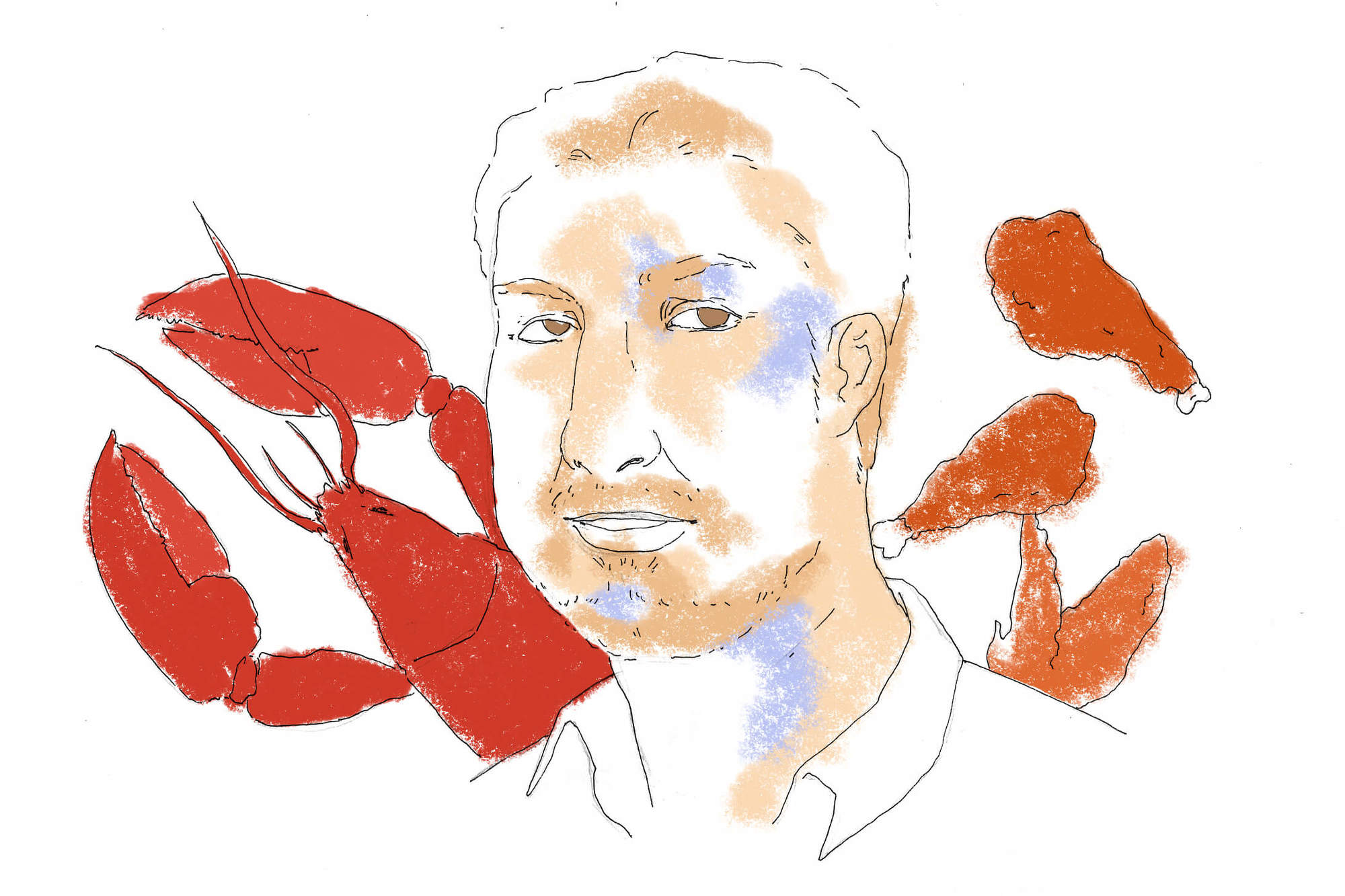
Jaye Elizabeth Elijah
Press play to listen to the audio quote. Read the full transcript here.
Lance Crawford has 500 cases of chicken wings, but no one wants to buy them.
“I used to sell 500 hundred cases every two weeks,” Crawford said. “Now I haven’t sold a case in five months.”
Crawford is the director of operations and national sales at Desert Gold, a food distributor in Las Vegas that buys products in bulk from suppliers and sells them to restaurants. Their biggest clients are the casinos that feed the endless stream of customers at Las Vegas’s famous buffets; Desert Gold also operates a seafood production house, supplying casinos with ready-to-serve king crab, snow crab, and lobster.
“Las Vegas is a cheap place to get food out to people,” Crawford said. “Just because of the sheer volume.”
Not so much anymore. Casinos are operating at half capacity, with limited menus and modified buffets, and Crawford’s business has shrunk to a level he’s never seen before. He said business is down by 75 percent.
“They want to make sure they’re keeping their jobs. They don’t know where they can go if they don’t have their jobs.”
“It’s a total mess,” said Crawford, who furloughed 75 percent of his almost 100 employees.
Desert Gold’s business depends on people eating a lot of food at casino buffets. When a customer pays to eat at a buffet, “they load their plate high as they want because no one’s given them any crap about that,” Crawford said. “And they’re going to do that again. And they’re going to do that again.”
Now that casinos have added servers at each buffet station, Crawford said, people get shy about loading their plates and returning for more, which means less sales for Desert Gold.
With buffet demand down, Desert Gold is working with its parent company to alter their seafood operation and distribute the fish as a consumer packaged good instead of to casinos. They’ve switched to bagging the fish to sell at grocery stores like Kroger’s.
And as casino chefs decrease the size of their menus, Crawford often finds himself with products on hand, like chicken wings, that he struggles to sell. Demand is diminished and unpredictable: Early in September, Cranford had 1,000 pounds of a popular potato salad and no buyer. He sent out an email to casino chefs, hoping one of them would put the product on their menu.
Meanwhile, he’s closely tracking Nevada’s re-opening plan. Even a small percent increase to indoor dining capacity would mean a bump in his sales.
But the 52-year-old Crawford said he’s thankful he has a job, as are his remaining employees. “I talk to them every day to see what’s going on,” Crawford said. “They want to make sure they’re keeping their jobs. They don’t know where they can go if they don’t have their jobs.”
Steven Kahn, 36
Valet Parking, Denver, Colorado
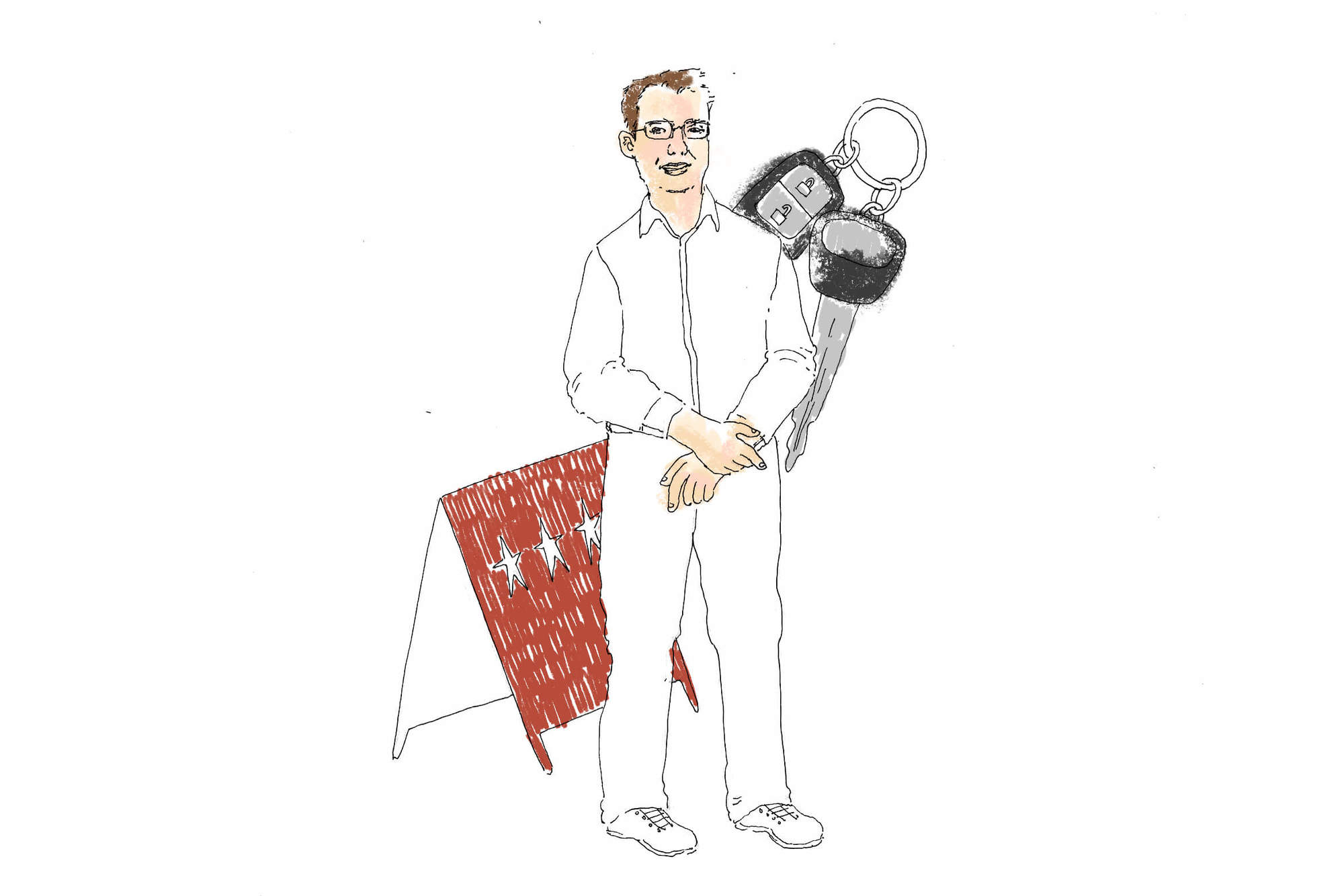
Jaye Elizabeth Elijah
Vail, Colorado, was an early hotspot when Covid-19 started to spread in the U.S. last March.
For Steven Kahn, who manages VIP Parking Solutions, a valet parking service based in Denver, Colorado, it was particularly bad news, because Vail Hospital is one of the company’s accounts.
“It was a scare,” said the 34-year-old Kahn, who worried some of his workers might have contracted the virus. None of them did, but the pandemic did take a toll on his business, which he runs with his brother.
“Let’s say we only did restaurants,” Kahn said. “We wouldn’t have a company right now.”
Normally, VIP Parking Solutions has 25 accounts, with more in the winter when they pick up jobs at ski resorts in the Colorado mountains. Now their business is down to a handful of places: hotels, apartment complexes and hair salons. All of Kahn’s current restaurant clients—around 10 of them—are dormant, either because businesses have closed or aren’t spending money on valet parking.
“One of my guys the other day was like, ‘oh, I haven’t seen you in a while.”
“We would be happy to go back to our restaurants too, once they are ready. We just don’t know when that will be. I don’t blame them,” said Kahn, of clients who are open but aren’t using his services. “I probably wouldn’t have valet right now, too.” Colorado’s restaurants can only open half of their indoor seats to diners. And 56 percent of restaurant owners say they will permanently close in the next three months if the situation doesn’t improve, according to a recent survey from the Colorado Restaurant Association.
Before the pandemic, Kahn, in his 11th year with the business, would order 120,000 valet tickets a year and hire around 80 employees, most of whom worked part-time as a second job. Today, only half of those employees are working.
Kahn used to like to drive around to his different locations and check up on employees. Now, he ventures out less. “One of my guys the other day was like, ‘Oh, I haven’t seen you in a while.”
They used to chat with about sports. Now all there is to talk about is the pandemic.
Kelly Kozak, 47
Knife Shop, San Francisco, CA
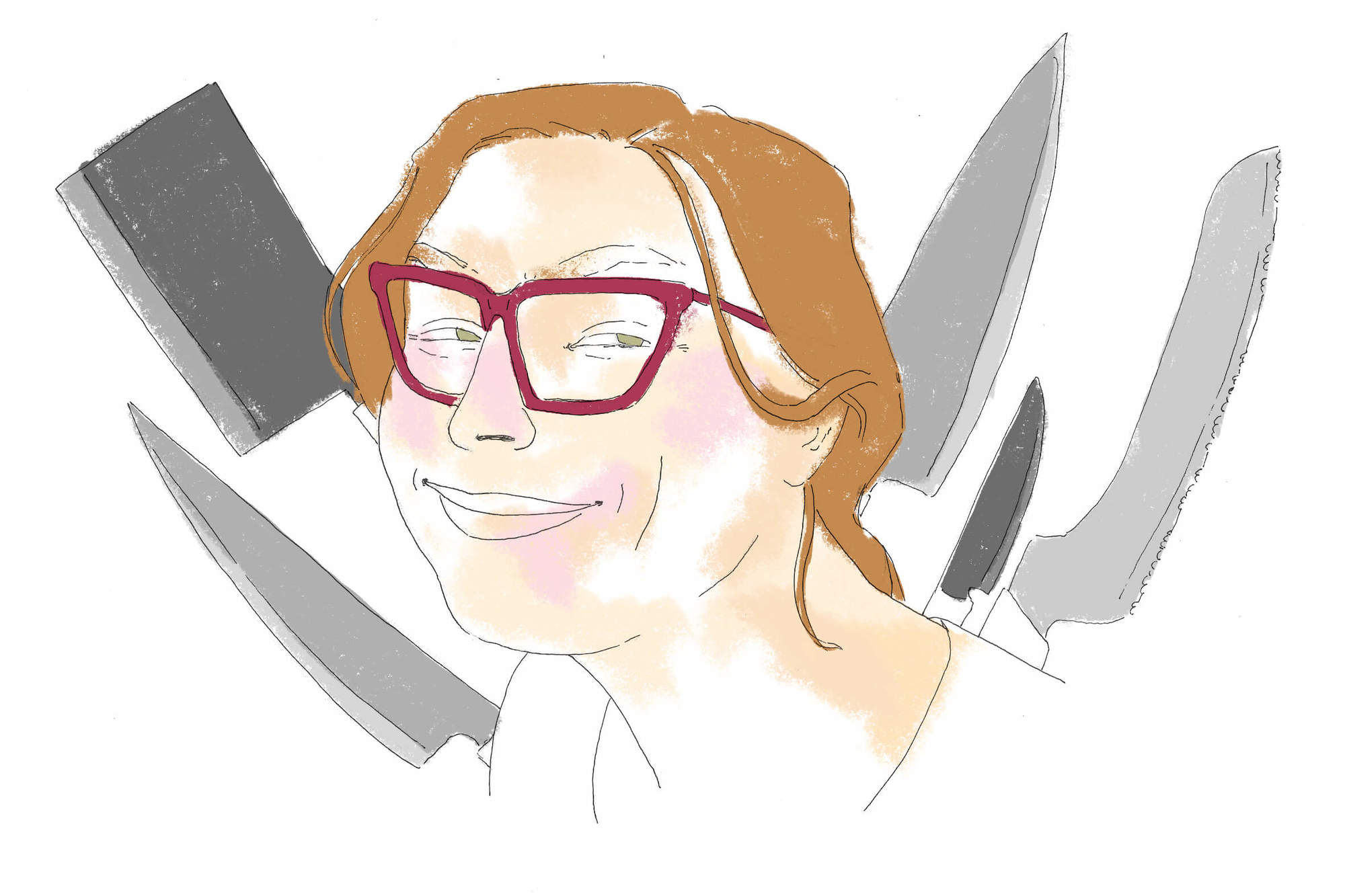
Jaye Elizabeth Elijah
Last February, a caterer came to Bernal Cutlery, a knife shop in San Francisco, to drop off her knives to be sharpened. She usually left a few at a time, but this time she dropped them all off at once. She didn’t need them.
“She said everything’s been cancelled,” said Kelly Kozak, who co-owns Bernal Cutlery with her husband. That was the moment when Kozak realized how much the pandemic would impact their business.
Normally, Bernal Cutlery is full of line cooks and chefs who drop off knives to be sharpened and peruse the shop’s drawers of vintage knives. But the shop hasn’t had any walk-in customers since March 16. Employees are at the store only to take in socially distant drop-offs for sharpening, and they now sell knives online with a virtual concierge service. The 47-year-old Kozak works from home, balancing her job with parenting three children, aged 16, 12, and nine.
“When school started I became 80 percent mom and 20 percent CFO of the business,” Kozak said, while her husband focuses more of his time on the shop.
“If they are doing well, everybody else is doing well.”
Bernal Cutlery relocated last year to a bigger location on a street with more foot traffic, and sales were rising. But Kozak said they’re bringing in 50 percent of the profits they projected, the same revenue as this time last year, despite the added expenses of higher rent and more employees. They’ve permanently closed a second location in Oakland because the space is too small for employees to keep a safe distance from each other. She has managed to keep all 11 employees on staff in the San Francisco location because of a deal she worked out with the state: She pays her employees 50 percent of their salary and they receive half of their unemployment benefits.
But Kozak said the biggest change is in their clientele. It used to be mostly line cooks and chefs. Now it’s mostly home cooks looking to purchase knives.
“It’s almost like the ratio has flipped,” Kozak said. “We had to kind of readjust how we interact with the customers.”
In hindsight, Kozak realizes she felt a false sense of security about the restaurant business and, by extension, her own. Wealthy people always want to eat, she said, and “we’re always going to be able to service the people that service the rich people.” But with restaurants crumbling, Kozak hopes the government will deliver on aid, like the Restaurant Act, to save an industry that’s responsible for so many jobs.
“I had a really challenging childhood. I was homeless when I was a teenager. And thank god for restaurants because I was able to get a job. So many people can get jobs through the industry and get a leg up,” she said.
“If they are doing well, everybody else is doing well.”
Ed Lazzerini, 48
Winery, Lancaster, Pennsylvania
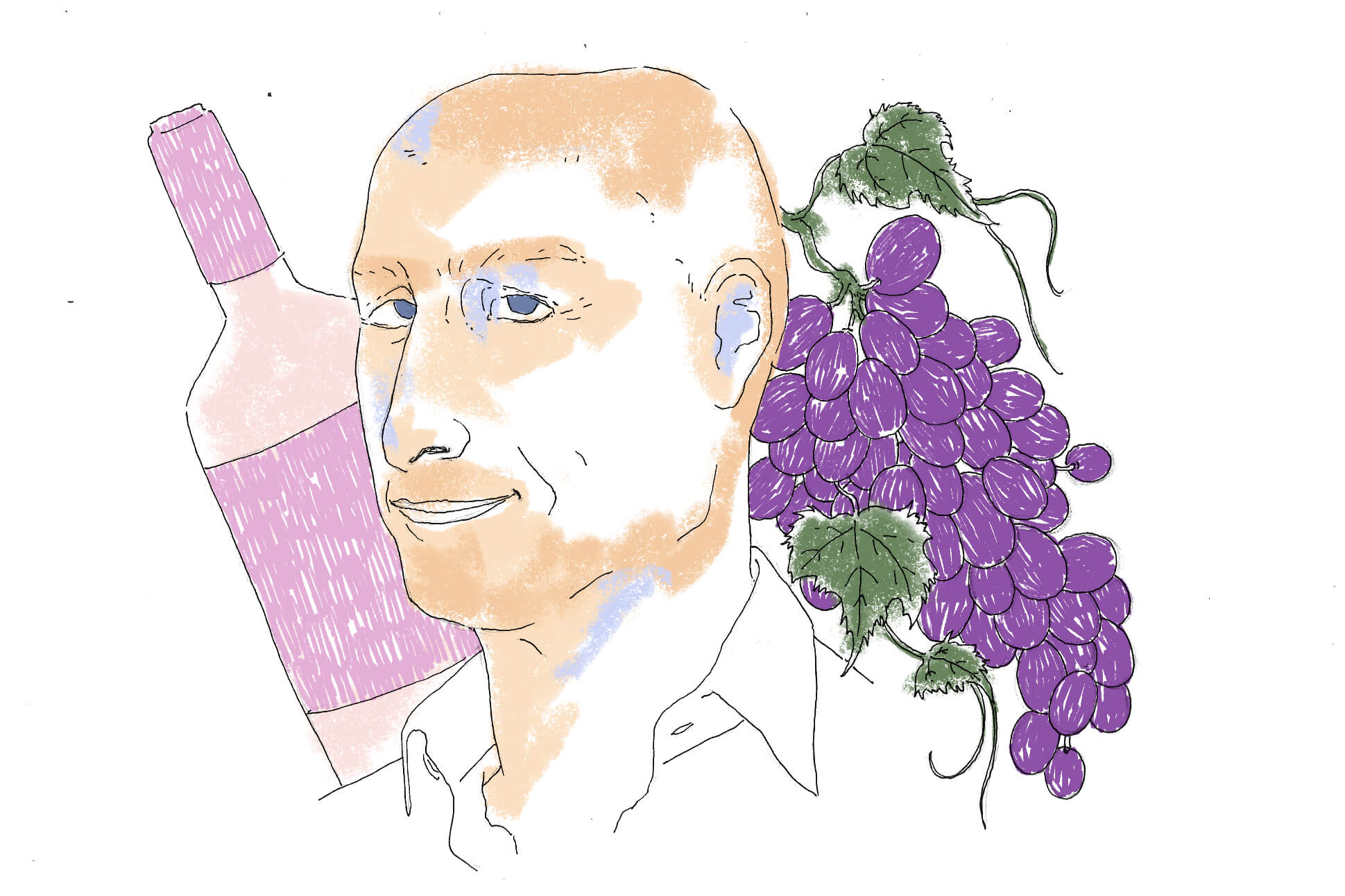
Jaye Elizabeth Elijah
Ed Lazzerini runs Vox Vineti, a small winery in southeastern Pennsylvania, where he lives with his wife and two children. They produce a few hundred cases of wine each year, and distribute the bottles to half a dozen restaurants across the region.
Patience is part of the process: Lazzerini and his wife purchased their property in 2006, hired consultants from France to help set up the winery, and produced their first vintage in 2012. In the years since, Lazzerini has worked to establish southeastern Pennsylvania as a credible source of fine wines.
“Last year business was exploding for us,” said Lazzerini, who had expected to run out of wine and wanted to expand the vineyard. “It was fantastic.”
Orders stopped almost entirely when the pandemic began. About a third of Vox Vineti’s wine goes to restaurants, with the rest of their sales to people who order online or come in the cellar for a tasting. But many of those customers learn about the wine by trying it in a local restaurant, which they can’t do now. As a result, business is down 60 to 70 percent.
“It’s tough when you’re not getting the other revenue coming in the door that we’ve planned and we should be getting in normal circumstances.”
“Spring was like crickets,” said Lazzerini. “It was very quiet.”
Lazzerini lives year-round on the vineyard with his wife and two young children. The couple work full-time jobs in addition to the winery, Lazzerini for a software company and his wife for a money management firm. Their jobs alleviate some of the financial stress, but it’s been hard.
“It’s tough when you’re not getting the other revenue coming in the door that we’ve planned and we should be getting in normal circumstances,” said Lazzerini.
The Lazzerinis, both 48, hope to one day pass down their winery to their children, but they know that it will take a long time for their investment to see real gain. They continued to expand the vineyard and produce wine this year, even though their sales slumped, but without money to hire help, Lazzerini had to the pruning and planting of new lines himself. He’d like to work full-time on the vineyard, but that can’t happen any time soon.
Juliana Pesavento, 32
Public Relations & Marketing, New York City, NY

Jaye Elizabeth Elijah
Press play to listen to the audio quote. Read the full transcript here.
Juliana Pesavento knows not every restaurant can afford to pay for branding or marketing services.
“It’s a little bit of chicken or the egg. Can you afford to invest in design and marketing? If you could, that could really impact your business. But that’s a risk you have to take,” said the 32-year-old Pesavento, a partner at Simmer Branding, a New York City PR company that works primarily with restaurants. If a restaurant changes their image without brand consultants, they risk hurting their business. “Are you losing customers because they don’t trust you as a brand anymore?”
While branding services may be a luxury, Simmer Branding had about 10 clients at any one time, and 13 employees, including a full-time photographer and videographer. Chefs came into Simmer’s office to shoot marketing campaigns for new menus, whipping up dishes in the office kitchen. “It looked kind of like a regular apartment kitchen. But we did a lot of magic in that space,” said Pesavento.
But Simmer has since lost the majority of their clients, given up their office space, and let go half of their staff. With branding and public relations industry fees ranging on average from $3,500 to $15,000 per month, restaurants can’t afford the investment.
“Our business is obviously so reliant on the success of the restaurant industry.”
“It was horrible. It was just so heartbreaking. To feel responsible for people’s livelihoods is something that I never really understood the weight of until the pandemic,” said Pesavento, who went unpaid for two months, until the company’s PPP loans kicked in, and is only now back to her regular paycheck.
“Our business is obviously so reliant on the success of the restaurant industry,” she said. “And if the restaurant industry crumbles or does not exist or has a massive shift, one of the first things that they cut are the quote unquote nonessential services. And that includes marketing and design.”
Simmer helped their remaining clients communicate how their businesses were changing. When Sophie’s Cuban, a long-time client with ten locations around Manhattan and Brooklyn, began to serve food to essential workers, Simmer helped promote the GoFundMe campaign.
“To have to make any sort of furloughs or job cuts especially in a year where business looks so promising, and none of our employees or none of the leaders in our company did anything wrong, to be so affected by outside circumstances is really tough.”
In Los Angeles, Wagstaff Worldwide, a larger public relations and marketing firm specializing in the hospitality industry, lost business as well. CEO Mary Wagstaff said the firm has lost about a third of its clients, and she was forced to let several employees go.
“To have to make any sort of furloughs or job cuts especially in a year where business looks so promising, and none of our employees or none of the leaders in our company did anything wrong, to be so affected by outside circumstances is really tough,” Wagstaff said.
The 56-year-old Wagstaff said she’s only able to make plans for her business in the short term, as she closely tracks whether restaurants are able to reopen. Her company had to throw away projections that they put together in April and May based on restaurants being able to re-open in June and July, which largely didn’t happen.
“Restaurants won’t be able to make it if they are not able to reopen,” said Wagstaff. “I’m not saying they should re-open, but it’s a tragedy that we’re not farther along in combating the virus itself.”

